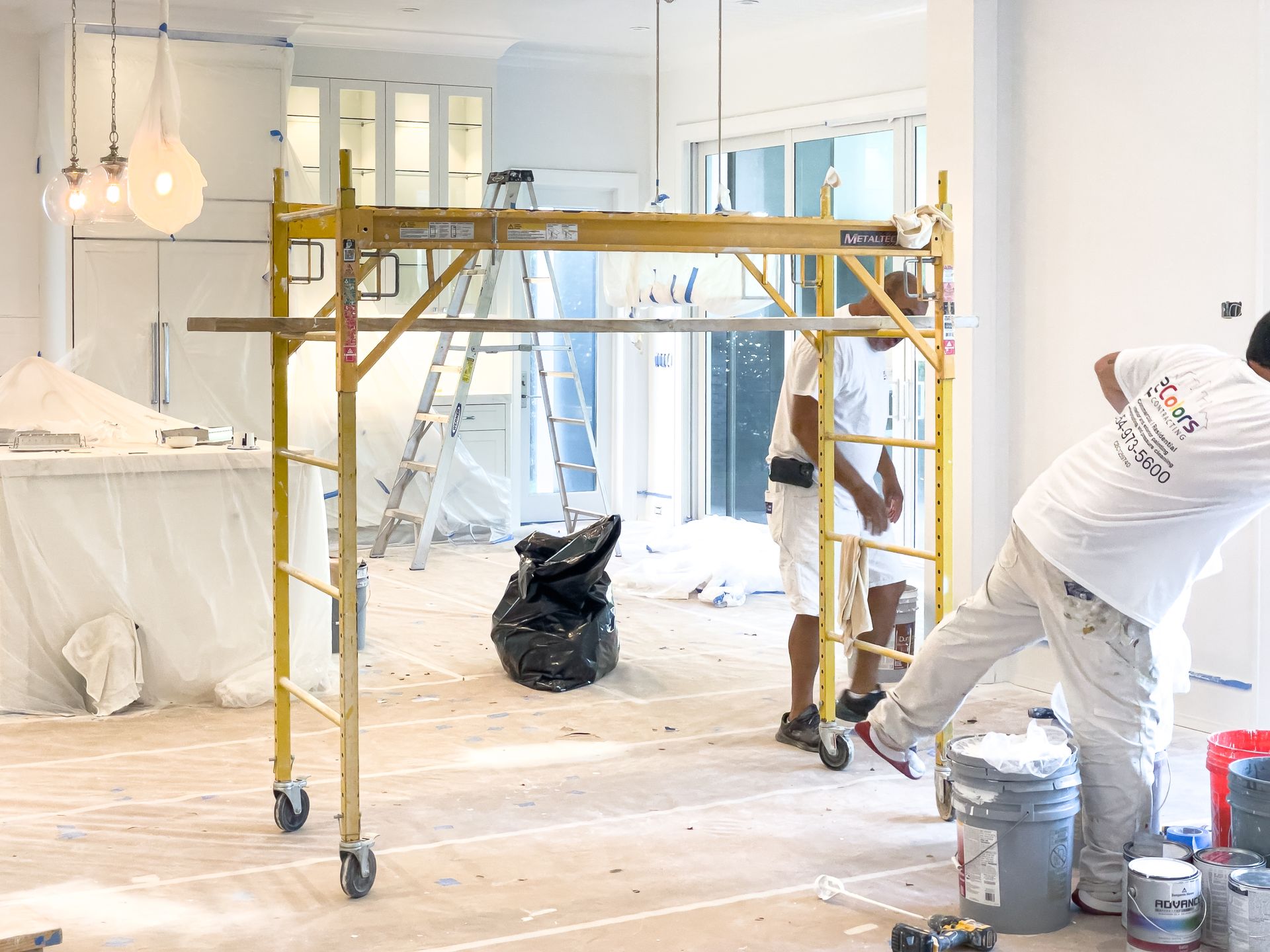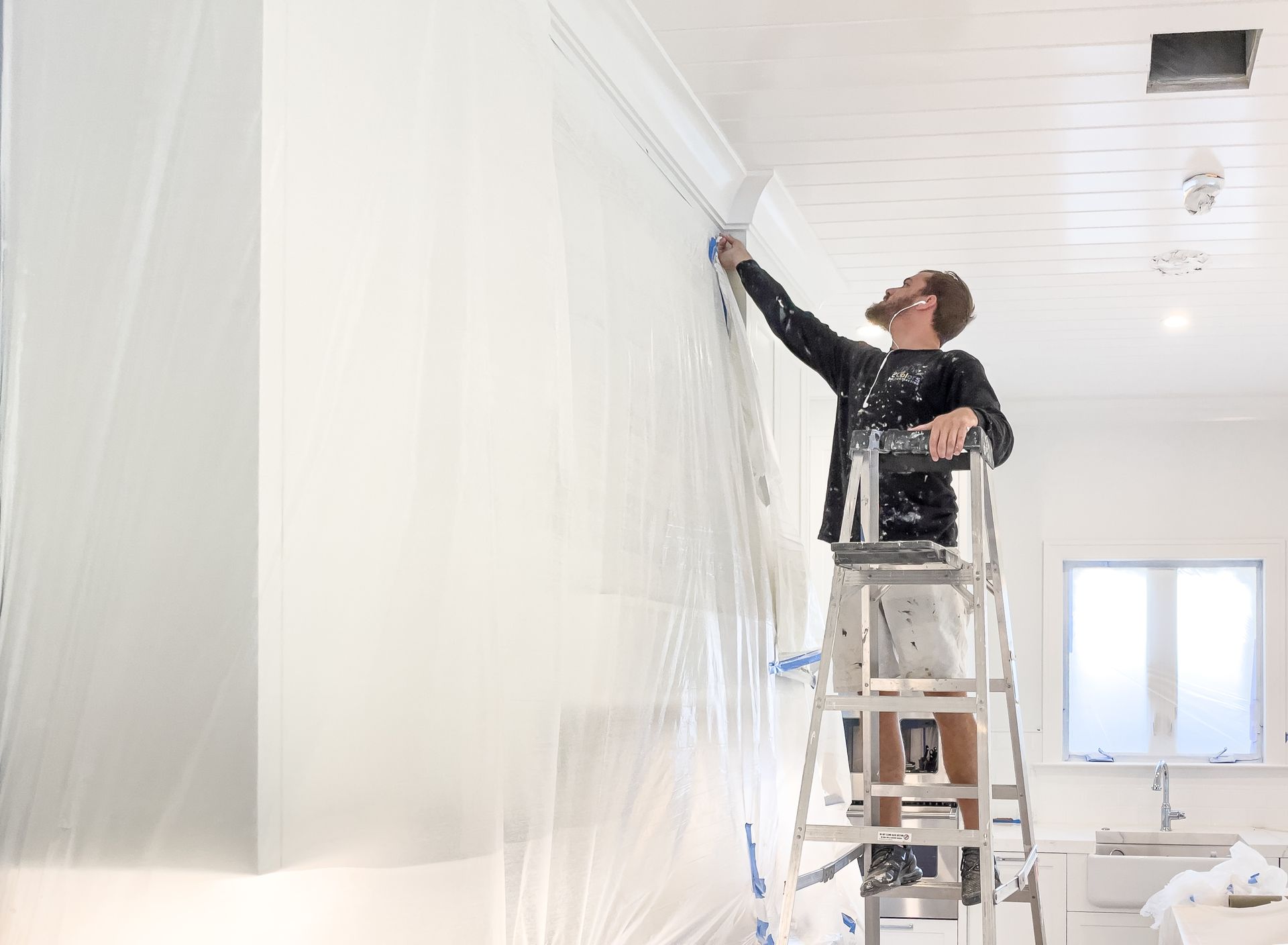Hiring a professional painter can transform your home, boosting its aesthetic appeal and potentially increasing its value. However, a successful painting project requires more than just picking the right colors—it requires a solid contract. A well-drafted contract protects you from unexpected issues and ensures both you and your painter are on the same page regarding expectations. In this guide, we’ll walk you through what a painting contract should include and how to ensure you’re hiring the right painter for the job.
Why is a Painting Contract Important?
A painting contract is a legal agreement between you (the client) and a painting contractor. It outlines every detail of the project to ensure that both parties have a clear understanding of the scope, timeline, costs, and responsibilities. Without a contract, you may find yourself facing unexpected fees, delays, or even unsatisfactory work with little to no recourse.
A comprehensive contract minimizes these risks, providing clarity on every aspect of the job, from how many coats of paint will be applied to who will clean up at the end of the project. In short, it’s your safeguard against miscommunication, unexpected costs, and unmet expectations.
Before You Sign a Painting Contract: Vetting Your Contractor
Before jumping into signing a contract, it’s important to do your homework and properly vet your painting contractor. You want to make sure you’re working with a reputable, experienced professional who will meet your expectations. Here are key steps to take when vetting potential contractors:
1. Check References
Ask for references from previous clients and follow up with them. Ask about their experience working with the contractor, whether the project was completed on time and within budget, and if they were satisfied with the quality of the work. Customer feedback is a valuable way to assess the contractor’s reliability and professionalism.
2. Verify Credentials
Make sure your contractor is licensed and insured. This is crucial because it ensures that the contractor meets the legal requirements to perform the work and that you are protected if anything goes wrong. Workers’ compensation insurance is also important, as it covers any injuries that may occur on your property during the project.
3. Meet the Contractor
Schedule a meeting with the contractor before hiring them. This could be an in-person meeting or a virtual consultation. Discuss the scope of the project, ask questions, and gauge their professionalism. This meeting will give you an idea of how well they understand your vision and how they communicate.
4. Clarify Expectations
Make sure to clearly communicate your expectations for the project. Discuss specific details like the areas to be painted, paint colors, finishes, and any other preferences you have. The contractor should be able to articulate their plan and timeline to achieve these goals.
5. Ask About Subcontractors
Find out if the contractor will be hiring subcontractors to perform some or all of the work. If so, ask for information about the subcontractors’ experience and credentials. The quality of the work may vary depending on who is actually performing the labor, so it’s important to know who will be on-site.
6. Get a Cost Estimate
Always ask for a detailed cost estimate before signing a contract. The estimate should include all expenses associated with the project, from labor to materials. Compare estimates from at least three different contractors to get a sense of a fair price for the job.

What Should a Painting Contract Include?
Once you’ve chosen a painter and you’re ready to proceed, it’s time to finalize the contract. A well-structured contract should be as detailed as possible, outlining everything from the cost of materials to the project timeline. Here are the key elements every painting contract should include:
1. Cost and Payment Terms
One of the most important aspects of your contract is the total cost of the project. The contract should clearly state the agreed-upon price, including labor, materials, and any additional fees. Be sure to include the following:
Total Cost: The overall price of the project, including any upfront deposits. Payment Terms: Detail how and when payments are due. Will you be required to pay a deposit upfront, make regular payments throughout the project, or pay the entire amount upon completion? Extra Fees: Specify any potential additional costs, such as for unexpected repairs or extra coats of paint.
Without clearly stated costs, you could end up with a final bill that’s significantly higher than expected, with no legal recourse to dispute it. Always have the total cost agreed upon and documented in writing.
2. Scope of Work
The scope of work section outlines what will be done during the project. This can include:
Areas to be painted (e.g., specific rooms, ceilings, trim, or exterior surfaces) Number of coats of paint to be applied Any prep work required (e.g., sanding, priming, or pressure washing) Cleanup responsibilities (who will handle the post-project cleanup)
The more detailed this section is, the better. If you’re having your home’s exterior painted and want the trim and doors painted as well, make sure that’s specified. Being clear about your expectations will prevent misunderstandings down the line.
3. Timeline
Painting projects can sometimes drag on longer than expected, so it’s important to include a detailed timeline in your contract. Specify start and completion dates, as well as any milestones along the way (such as when the prep work should be finished or when the first coat of paint should be applied).
Start Date: When the contractor will begin the project.
Completion Date: The hard deadline for finishing the project. Benchmarks: Key milestones for project progress (e.g., when prep work should be done).
By having a timeline in place, you can ensure that the project stays on track and that there are no unnecessary delays.

4. Project Changes
Home improvement projects often encounter unexpected issues, and painting is no exception. Whether it’s discovering mold behind a wall or deciding to change the color of the trim mid-project, it’s important to plan for potential changes.
Change Orders: The contract should outline the process for handling changes to the project. Any modifications, whether due to unforeseen issues or homeowner decisions, should require a signed change order that includes any cost adjustments.
Including a clear process for project changes ensures that both parties are informed and on the same page when adjustments are needed.
5. Industry Standards
You’re paying for professional work, and your contract should reflect that by outlining industry standards for the quality of work. This section can cover:
Surface Preparation: Details on how the painter will prepare surfaces before painting (e.g., sanding, priming). Paint Application: Specify how many coats of paint will be applied and the method (e.g., brush, roller, spray). Materials: The type and brand of paint to be used, and whether the contractor or homeowner will purchase the paint.
By setting clear standards, you can ensure that you receive high-quality work that meets your expectations.
6. Use of Premises
Clarify any details about the use of your home during the project. This can include:
Where workers can park Access to your home (e.g., are workers allowed inside, and under what conditions?) Workspace boundaries (e.g., where materials and equipment will be stored)
Including these details can prevent misunderstandings and ensure that the project proceeds smoothly with minimal disruption to your daily routine.
7. Materials and Equipment
If you have specific materials in mind for the project, such as a certain brand or type of paint, make sure this is outlined in the contract. Be as specific as possible, including product numbers if necessary. Also, specify who is responsible for purchasing the materials—will the contractor provide everything, or are you supplying the paint?
Additionally, include details about the equipment to be used, such as drop cloths to protect your furniture and flooring. The contract should also specify safety measures, like the use of ladders or scaffolding.

8. Insurance and Licensing
The contractor should carry adequate insurance, including both general liability insurance and workers’ compensation. This protects you in case of property damage or if a worker is injured on the job.
General Liability Insurance: Covers damages to your property caused by the contractor. Workers’ Compensation Insurance: Covers injuries to workers on your property.
Ensure that the contract states that the contractor will follow all local codes and regulations, and request proof of insurance before signing.
9. Damage Control
Accidents happen, even with the most experienced professionals. Include a clause in your contract specifying what will happen if property damage occurs during the project. This protects you from bearing the cost of repairs if the contractor or their crew accidentally damages your home.
Damage Clause: Outline how damages will be addressed and who will be responsible for repairs.
Having a clear damage control plan ensures that you won’t be left footing the bill for unexpected repairs.
10. Warranty
Many reputable painters offer warranties on their work, typically lasting two to three years. This warranty should cover issues like peeling, fading, and blistering caused by poor workmanship or materials.
Labor Warranty: Covers issues related to the quality of the painter’s work (e.g., improper application, peeling). Materials Warranty: Covers defects in the paint itself (e.g., fading, flaking).
Review the warranty details carefully and ensure that they are clearly outlined in the contract.
11. Exit Clause
An exit clause allows either party to terminate the contract under certain conditions. This could include situations where the contractor fails to meet deadlines or if the homeowner decides to cancel the project. The clause should also outline what happens to any payments already made in the event of termination.
Refund Policy: Specify if the contractor is required to refund any deposits if the job is not completed.
Having an exit clause provides protection and clarity if things don’t go as planned.

After the Project: Final Inspections and Payments
Once the painting project is complete, it’s important to do a final walk-through with your contractor to ensure everything meets your expectations. Inspect the work carefully and look for any areas that may require touch-ups. Common issues include:
Uneven paint coverage Missed spots Paint on areas that weren’t supposed to be painted (e.g., trim, windows)
If any problems arise, address them immediately and have the contractor fix them before making the final payment.
After the job is completed to your satisfaction, it’s time to settle the bill. If your contract includes a labor guarantee, you’ll want to monitor the paint job over time for issues like peeling or fading. If problems occur within the warranty period, you can request that the contractor return to fix them.
By carefully vetting your contractor and ensuring that your painting contract includes all the necessary details, you can enjoy a smooth, stress-free project. From clear payment terms to specifying the quality of work, a well-drafted contract will give you peace of mind and ensure that your home improvement project turns out just as you envisioned.
Tru Colors Contracting is a leader in residential and commercial painting services in the Broward, Miami-Dade and Palm Beach County area. We’re a licensed Florida Certified General Contractors and a local, family-owned South Florida business that offers premium interior and exterior painting services to residents, businesses , property management companies and homeowners’ associations in the Tri County area.
At Tru Colors Contracting, our number one goal is exceeding our clients’ expectations on every project. With our attention to detail and commitment to excellent customer service, you can be assured that your project will be successfully completed on time and within your budget. From concept design to final walk-through, our dedicated team of professionals will superior service through every step of your painting project.
Contact Us today to schedule a n estimate and transform your space!

